Related Research Articles
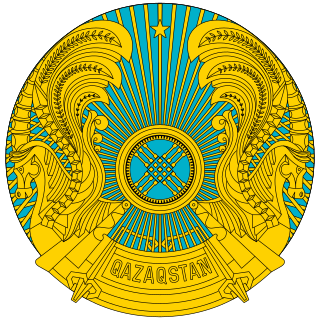
The politics of Kazakhstan takes place in the framework of a semi-presidential republic, whereby the President of Kazakhstan is head of state and nominates the head of government. Executive power is exercised by the government. Legislative power is vested in both the government and the two chambers of parliament.

Liechtenstein is a principality governed under a semi-constitutional monarchy. It has a form of mixed constitution in which political power is shared by the monarch and a democratically elected parliament. There is a two-party system and a form of representative democracy in which the prime minister and head of government is responsible to parliament. However the Prince of Liechtenstein is head of state and exercises considerable political powers.
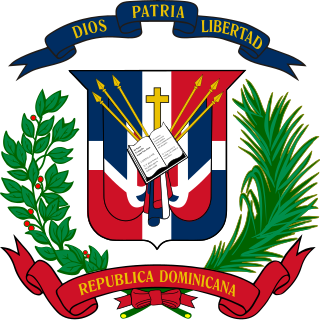
The Dominican Republic is a representative democracy, where the President of the Dominican Republic functions as both the head of the government and head of the multi-party system. Executive power is exercised by the government. Legislative power is vested in the bicameral National Congress. The Judiciary is independent of the executive and the legislature.
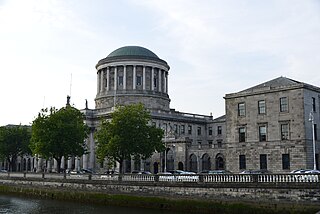
The Supreme Court of Ireland is the highest judicial authority in Ireland. It is a court of final appeal and exercises, in conjunction with the Court of Appeal and the High Court, judicial review over Acts of the Oireachtas. The Supreme Court also has appellate jurisdiction to ensure compliance with the Constitution of Ireland by governmental bodies and private citizens. It sits in the Four Courts in Dublin.

The Supreme Court of Norway is the highest court in the Norwegian judiciary. It was established in 1815 on the basis of section 88 in the Constitution of the Kingdom of Norway, which prescribed an independent judiciary. It is located in the capital Oslo. In addition to serving as the court of final appeal for civil and criminal cases, it can also rule whether the Cabinet has acted in accordance with Norwegian law and whether the Parliament has passed legislation consistent with the Constitution.

The Supreme Court of Florida is the highest court in the U.S. state of Florida. It consists of seven justices—one of whom serves as Chief Justice. Six members are chosen from six districts around the state to foster geographic diversity, and one is selected at large.

The Political Constitution of Colombia of 1991, is the Constitution of the Republic of Colombia. It was promulgated in Constitutional Gazette number 114 on Thursday, July 4, 1991, and is also known as the Constitution of Human Rights. It replaced the Political Constitution of 1886 and was issued during the presidency of the liberal César Gaviria, with ideas from the also liberal Luis Carlos Galán.

The chief justice of Ireland is the president of the Supreme Court of Ireland. The chief justice is the highest judicial office and most senior judge in Ireland. The role includes constitutional and administrative duties, in addition to taking part in ordinary judicial proceedings.
The Tennessee Plan is a system used to appoint and elect appellate court judges in Tennessee. It is largely patterned after the Missouri Plan, and an earlier version in Tennessee was called the Modified Missouri Plan. At the end of every judge's eight-year term following a judicial appointment to the highest courts, retention elections are held, which have the option of whether each judge shall be retained through a yes-no option. This system applies to the Tennessee Supreme Court, the Tennessee Court of Appeals, and the Tennessee Court of Criminal Appeals.

In most legal jurisdictions, a supreme court, also known as a court of last resort, apex court, and highcourt of appeal, is the highest court within the hierarchy of courts. Broadly speaking, the decisions of a supreme court are binding on all other courts in a nation and are not subject to further review by any other court. Supreme courts typically function primarily as appellate courts, hearing appeals from decisions of lower trial courts, or from intermediate-level appellate courts. A Supreme Court can also, in certain circumstances, act as a court of original jurisdiction, however, this is typically limited to constitutional law.

The government of the U.S. State of Oklahoma, established by the Oklahoma Constitution, is a republican democracy modeled after the federal government of the United States. The state government has three branches: the executive, legislative, and judicial. Through a system of separation of powers or "checks and balances," each of these branches has some authority to act on its own, some authority to regulate the other two branches, and has some of its own authority, in turn, regulated by the other branches.
A judicial retention election is a periodic process in some jurisdictions whereby a judge is subject to a referendum held at the same time as a general election. The judge is removed from office if a majority of votes are cast against retention.
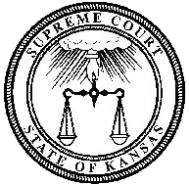
The Kansas Supreme Court is the highest judicial authority in the U.S. state of Kansas. Composed of seven justices, led by Chief Justice Marla Luckert, the court supervises the legal profession, administers the judicial branch, and serves as the state court of last resort in the appeals process.

The Supreme Court of Honduras is the Supreme Court and Constitutional Court of Honduras. The Supreme Court is the highest judicial authority in Honduras.

A constitutional referendum on a number of changes to the constitution was held in Turkey on 12 September 2010. The results showed the majority supported the constitutional amendments, with 58% in favour and 42% against. The changes were aimed at bringing the constitution into compliance with European Union standards. Supporters of Turkish EU membership hope constitutional reform will facilitate the membership process.

The Constitution of Bhutan was enacted 18 July 2008 by the Royal Government of Bhutan. The Constitution was thoroughly planned by several government officers and agencies over a period of almost seven years amid increasing democratic reforms in Bhutan. The current Constitution is based on Buddhist philosophy, international Conventions on Human Rights, comparative analysis of 20 other modern constitutions, public opinion, and existing laws, authorities, and precedents. According to Princess Sonam Wangchuck, the constitutional committee was particularly influenced by the Constitution of South Africa because of its strong protection of human rights.

The Government of Japan consists of legislative, executive and judiciary branches and is based on popular sovereignty. The Government runs under the framework established by the Constitution of Japan, adopted in 1947. It is a unitary state, containing forty-seven administrative divisions, with the Emperor as its Head of State. His role is ceremonial and he has no powers related to the Government. Instead, it is the Cabinet, comprising the Ministers of State and the Prime Minister, that directs and controls the Government and the civil service. The Cabinet has the executive power and is formed by the Prime Minister, who is the Head of Government. The Prime Minister is nominated by the National Diet and appointed to office by the Emperor.

The monarchy of Liechtenstein is the constitutional form of government by which a hereditary sovereign reigns as the head of state of Liechtenstein. The current monarch is Prince Hans-Adam II. The House of Liechtenstein, after which the sovereign principality was named in 1719, hails from Liechtenstein Castle in Lower Austria, which the family possessed from the middle of the twelfth century to the thirteenth century, and from 1807 onward. It is the only remaining European monarchy that practises strict agnatic primogeniture.
The Judiciary of Azerbaijan exercises judicial power in Azerbaijan. Although the Azerbaijan constitution nominally guarantees judicial independence, the executive firmly controls prosecutors and judges. Judges and prosecutors collaborate in Azerbaijan to repress political opponents.
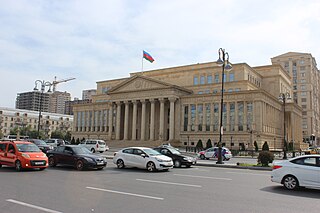
The Supreme Court of Azerbaijan is the highest court instance and final court of appeal of three-staged judicial system in Azerbaijan. Established in pursuant Article 131 of the Constitution of the Republic of Azerbaijan and Article 77 of the Law "on Courts and Judges". The Supreme Court has competence to carry out justice on civil, criminal disputes and other cases related to the execution of general or specialized courts. Despite being established in Baku, its jurisdiction applies to the entire territory of the Republic of Azerbaijan.
References
- ↑ "Organisation of the judicial system".
- ↑ "European Databases | Princely courts of Liechtenstein".
- ↑ "Richterauswahlgremium". www.landtag.li. Retrieved 2023-08-21.
- ↑ Constitution of Liechtenstein, Article 94 para. 1
- ↑ Constitution of Liechtenstein, Article 94 para. 2
- ↑ Tools, Legal Research. "European Databases | Princely courts of Liechtenstein".
- ↑ "Entscheidungen der liechtensteinischen Gerichte". www.gerichtsentscheidungen.li. Retrieved 2022-09-01.
- ↑ "Princely Courts of Liechtenstein".
- ↑ "Gesetz vom 24. Oktober 2007 über die Organisation der ordentlichen Gerichte (Gerichtsorganisationsgesetz; GOG)" (PDF).
- ↑ Constitution of Liechtenstein, Article 105
- ↑ Constitution of Liechtenstein, Article 104